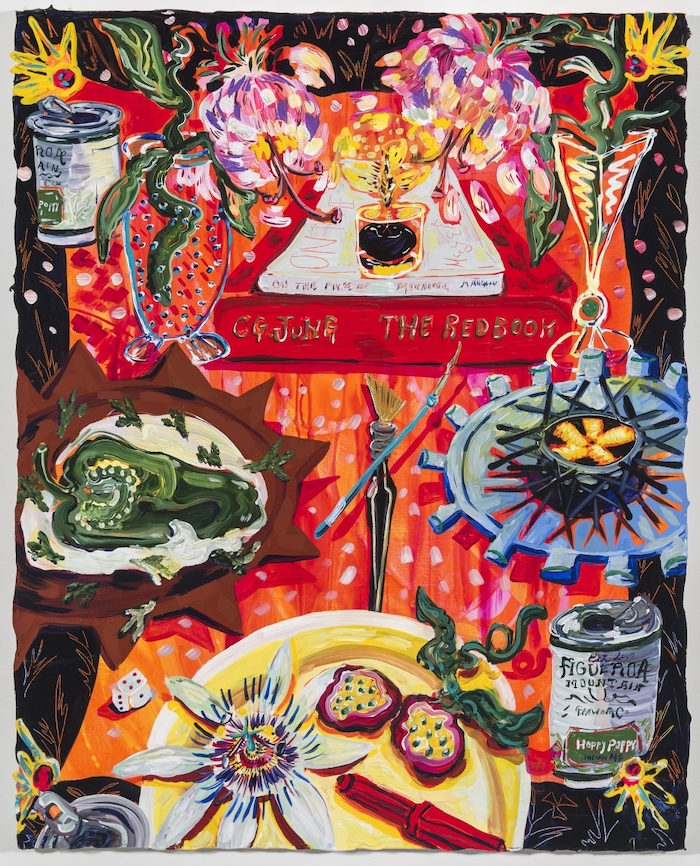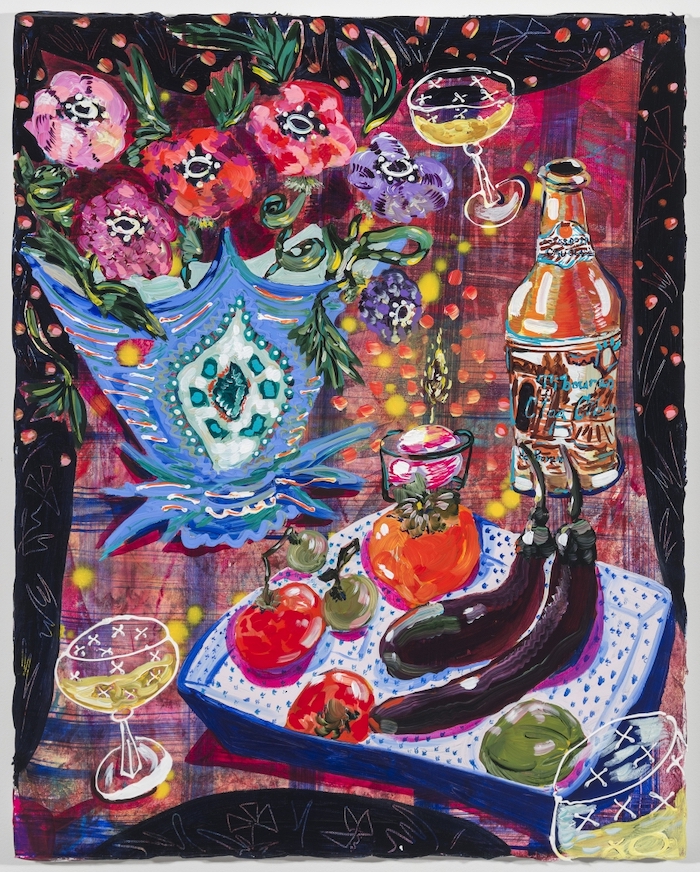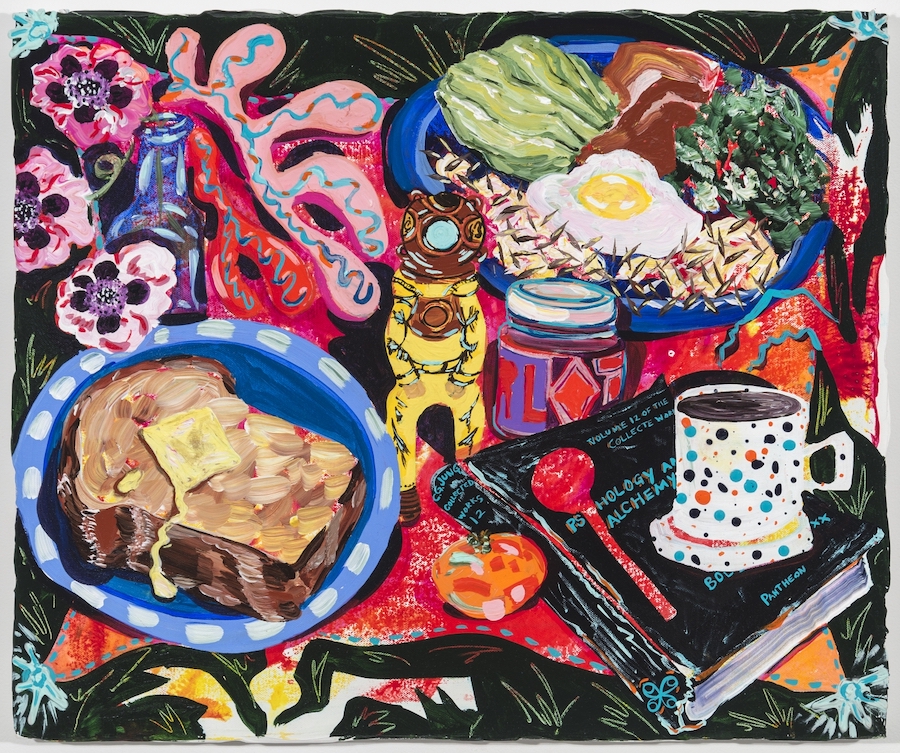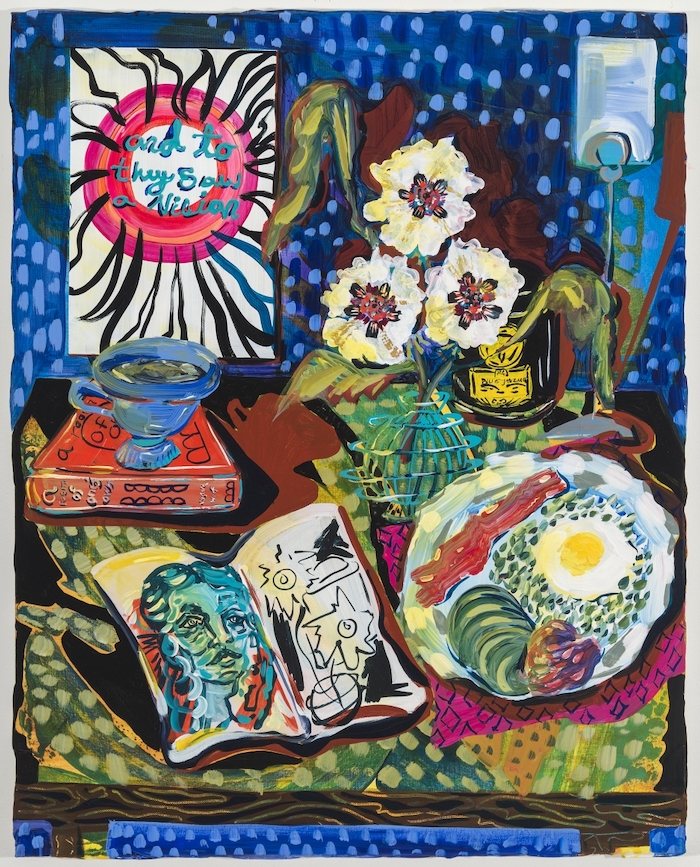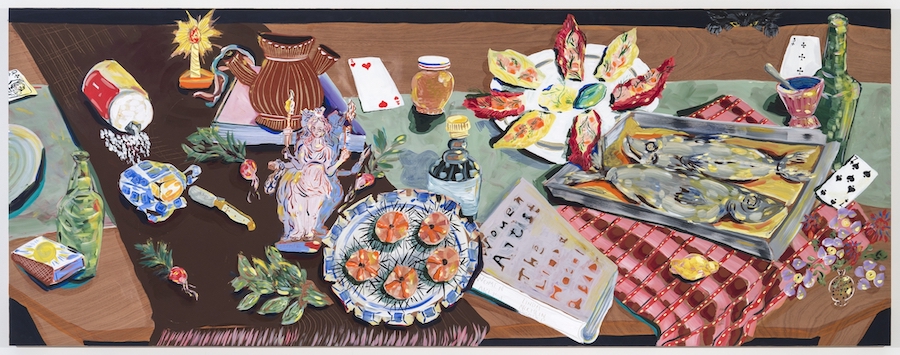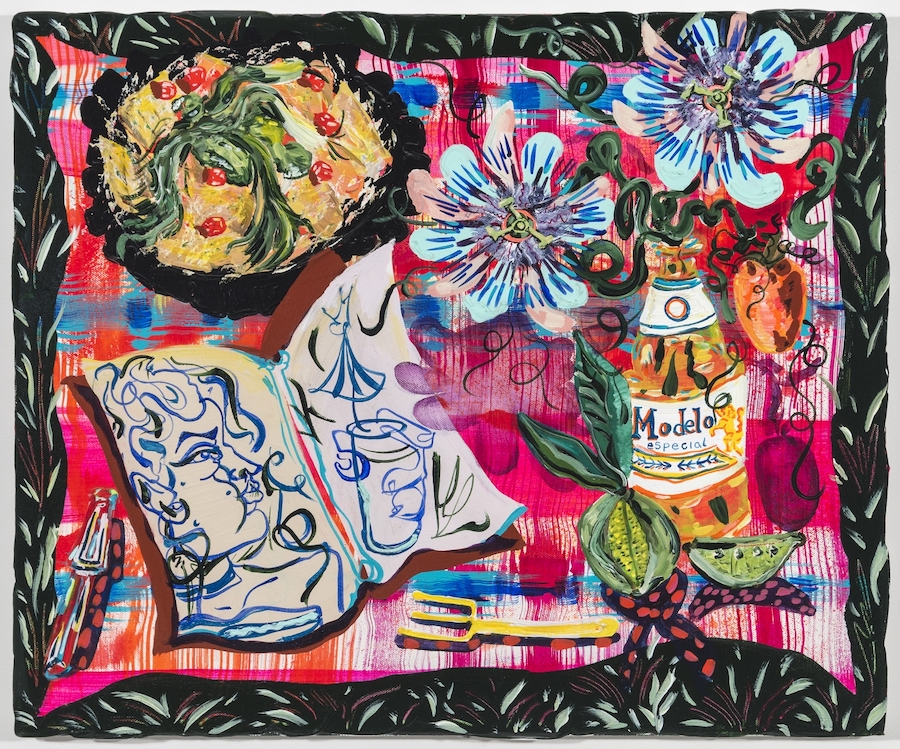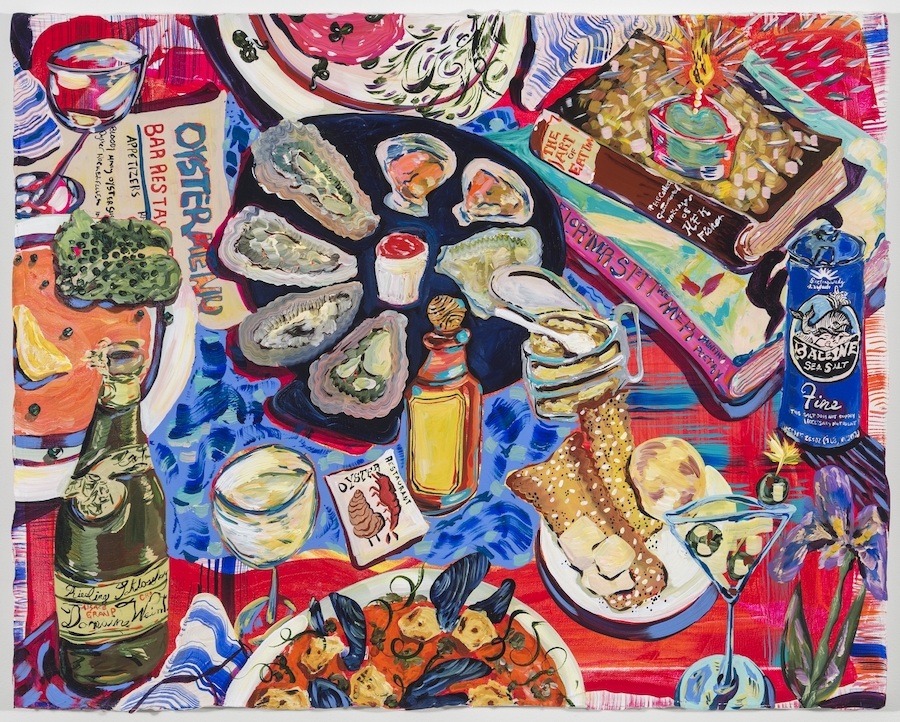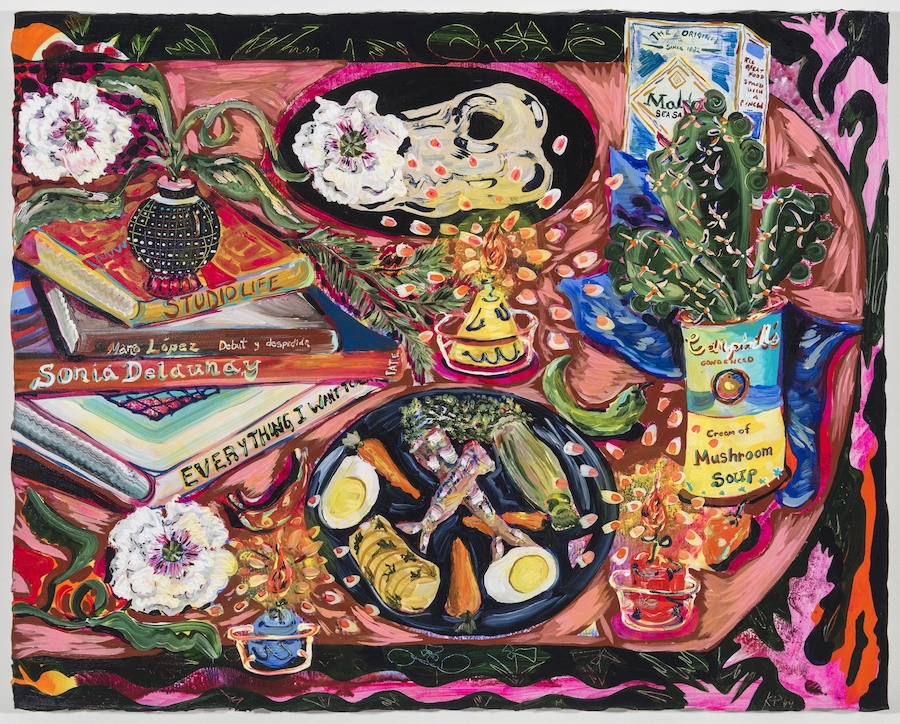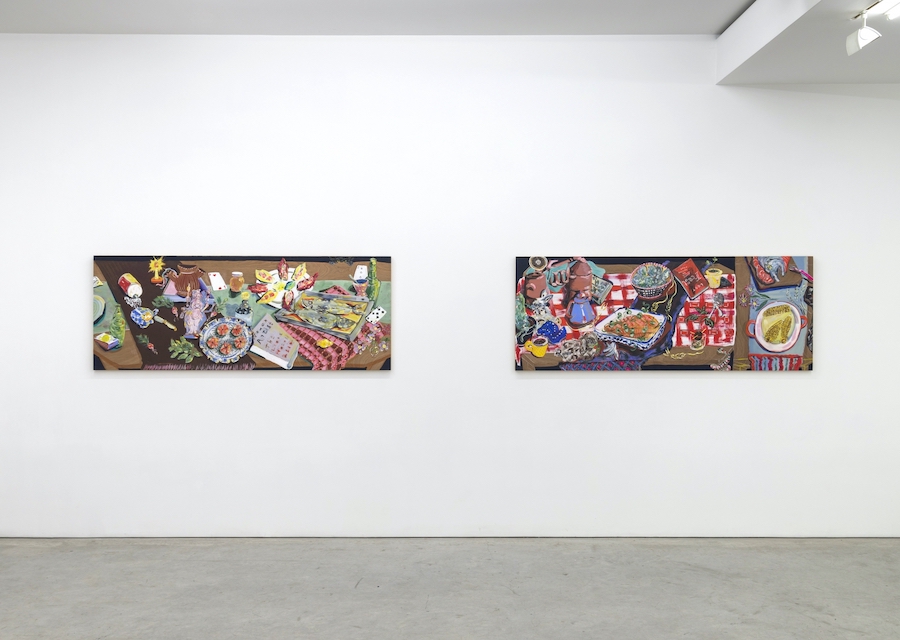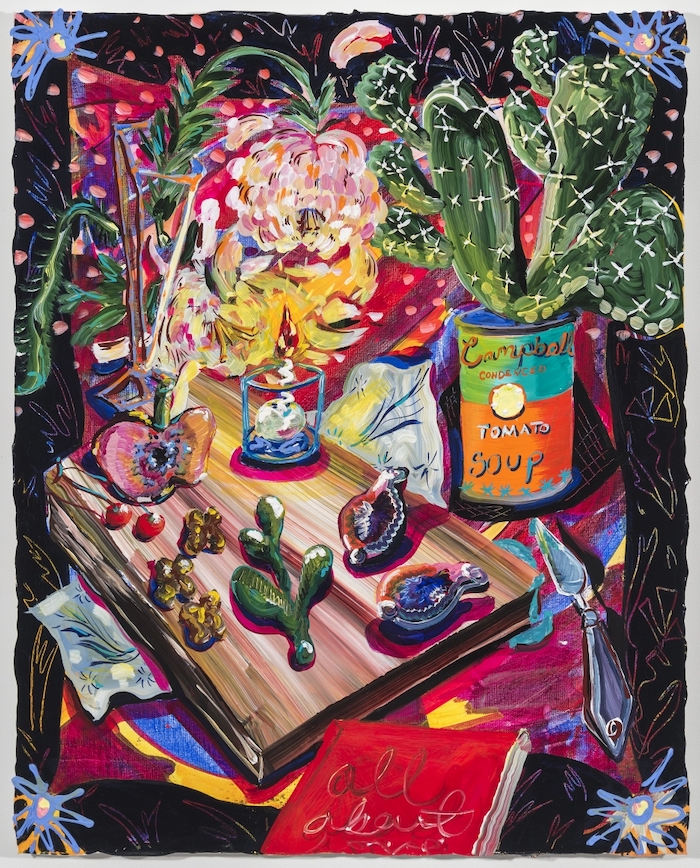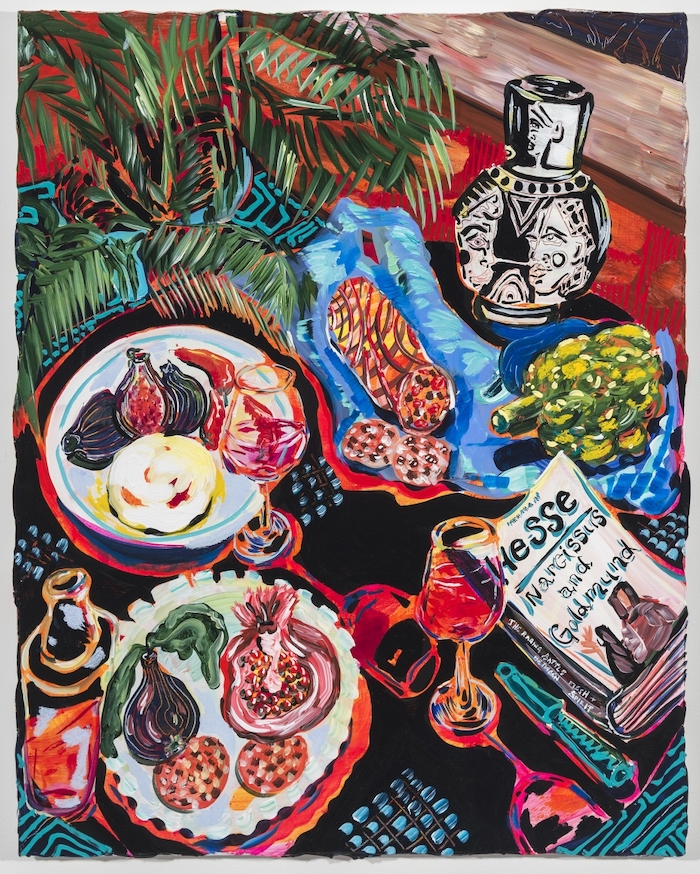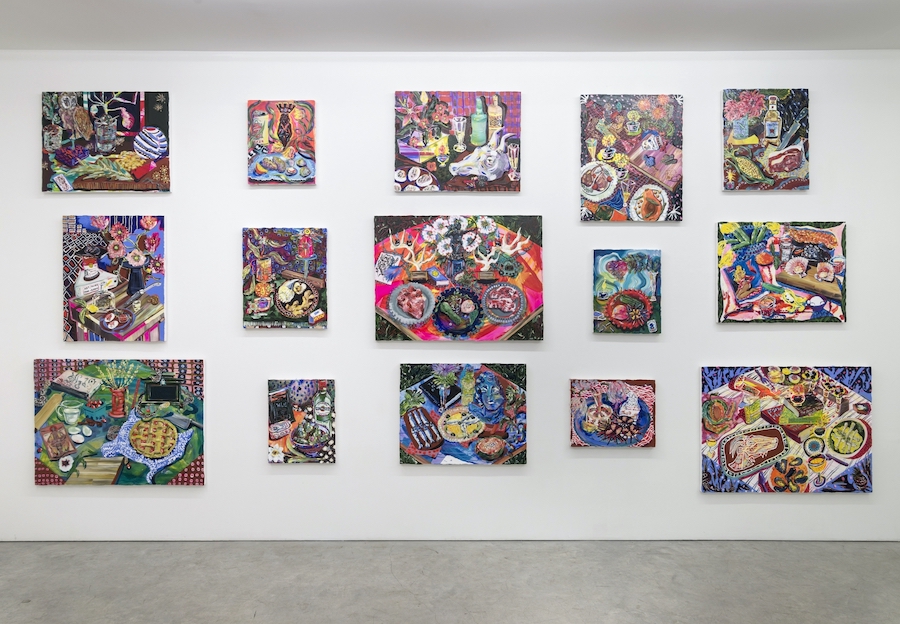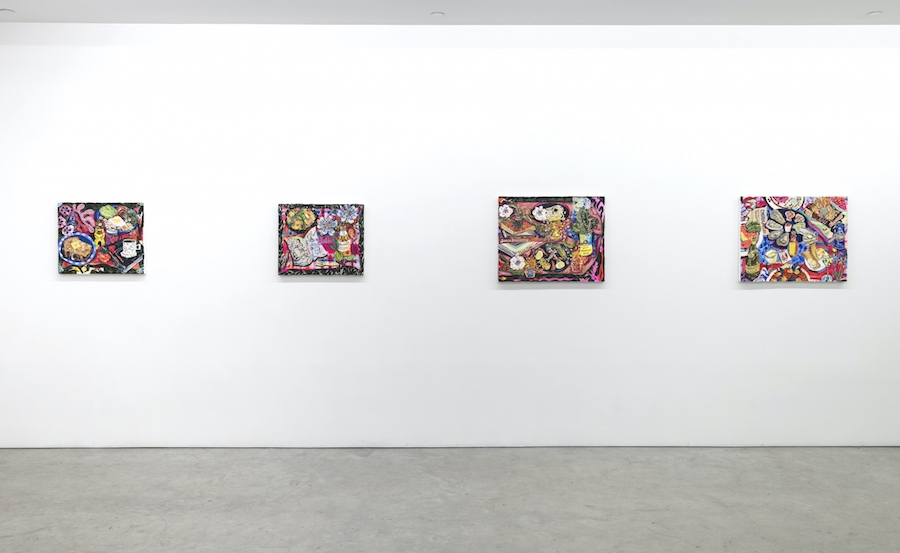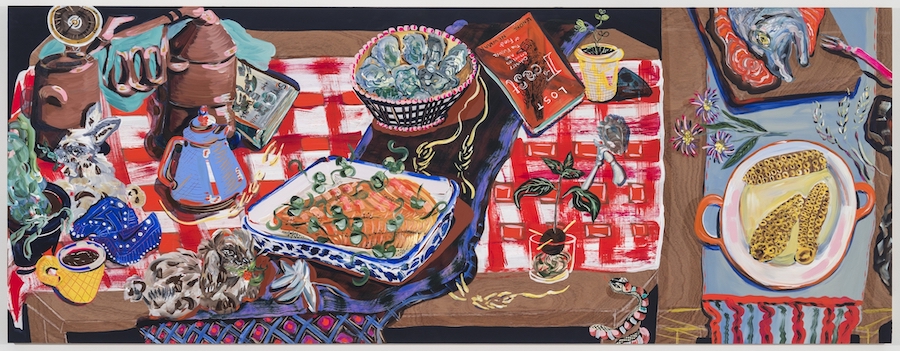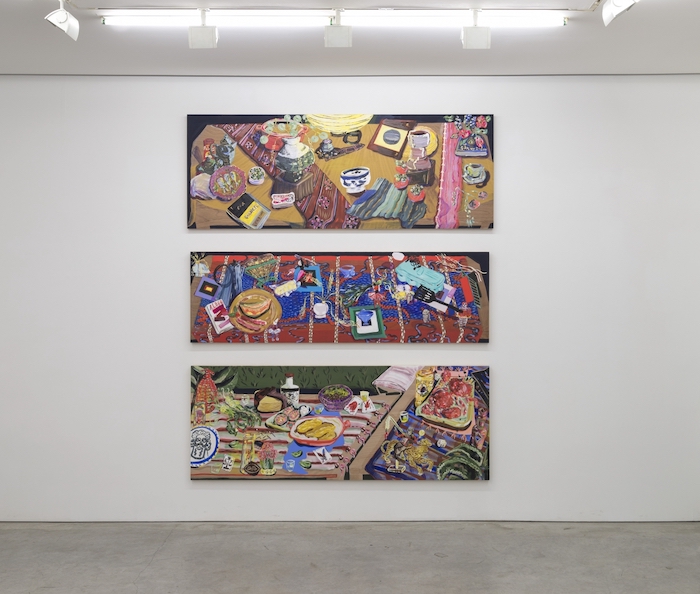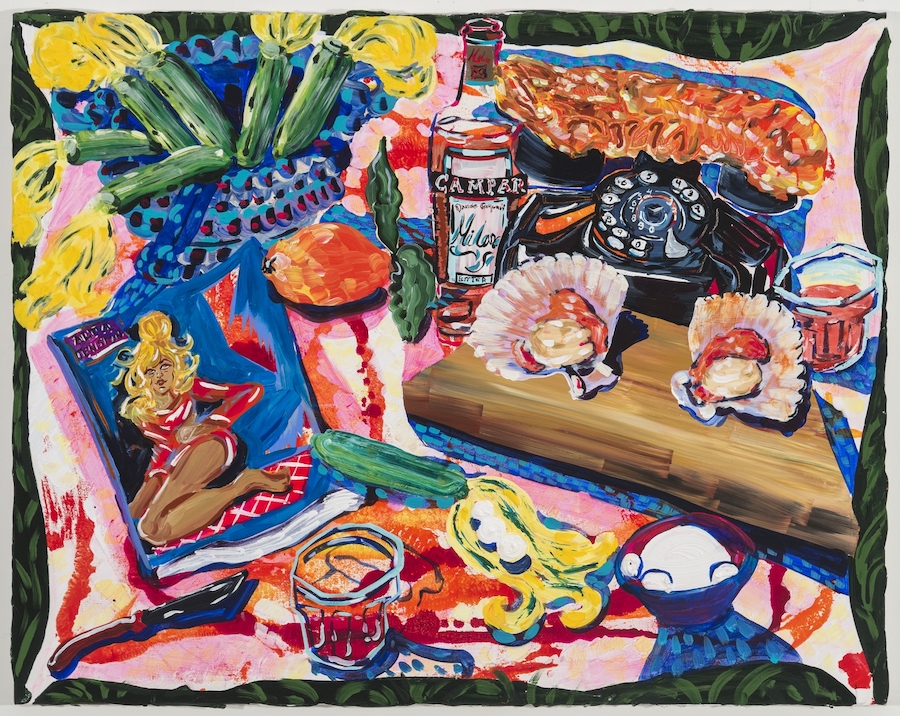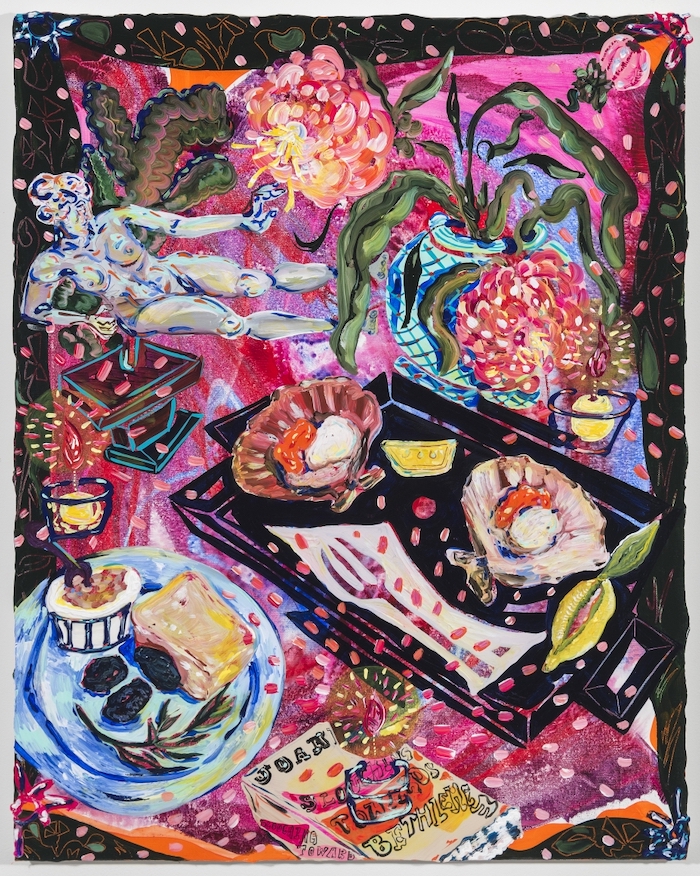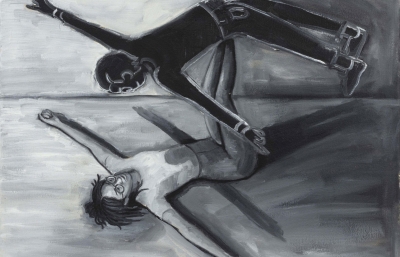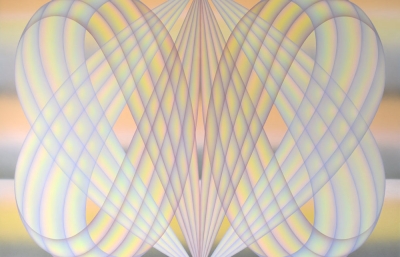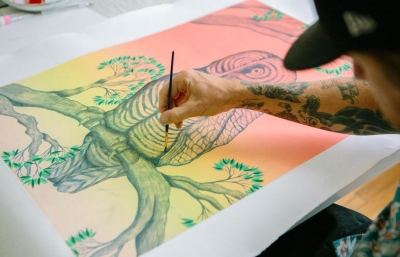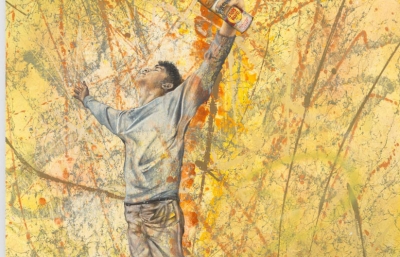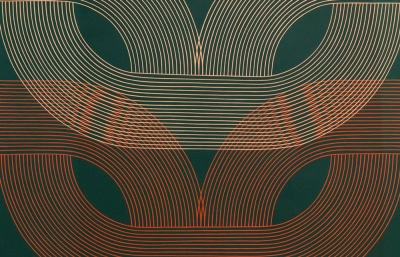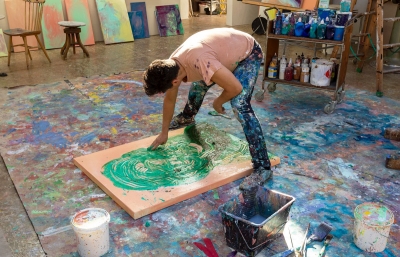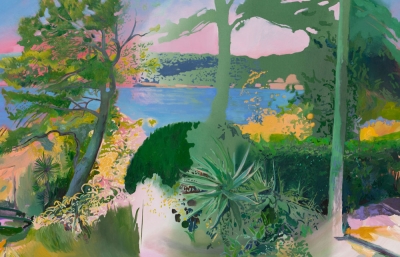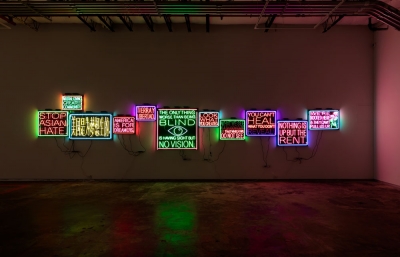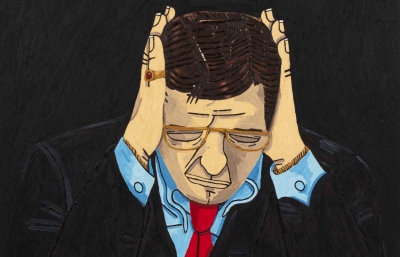Fredericks & Freiser is pleased to introduce an exhibition of new paintings by Kate Pincus-Whitney (b. 1993, lives and works in Los Angeles). Invested in the sociopolitical and emotive possibilities of the dining table, Pincus-Whitney creates maximalist still life scenes replete with colorful and textured objects of consumption. Whether spilling out onto fabric surrounded by florae or smothering a wooden tabletop, Pincus-Whitney populates her canvases with “things”—from food and drinks, to books and candles, to various utensils and wares. Her cosmologies of both highly personal and universally recognizable subjects gesture towards the shared necessity of sustenance. They reimagine the still life as a form of narrative portraiture and harness the psychological power of the communal meal to tap into the collective unconscious.
Unapologetic in her bold color palette, Pincus-Whitney’s scenes are boisterous and frenetic as they buzz with ineffable energy. Theatrically staged to explore the duality of the sacred and the profane, the result is a complete orchestration of a picnic or celebratory meal. Pincus-Whitney harnesses what Jane Bennett calls “thing-power”: every day man-made objects are imbued with a strange and not-fully-knowable aliveness. In Bennett’s conceptualization, we are subject to the “vital materialities” we encounter; Pincus-Whitney’s luminous objects exert their own thing-power and become acting subjects in their own right. The tablescapes read as both sacred shrine and intimate celebration wherein food acts as both symbol and icon. Through these scenes, the artist offers gratitude to a childhood raised in the kitchen by her mother and grandmother, just as she invites her audience to take part in this intimate history. 
As much about life as about death, Pincus-Whitney’s scenes are a contemporary investigation into the Dutch legacy of the stilleven, more appropriately called nature morte in the French tradition and naturaleza muerta in the Spanish. Apparent are the artist’s myriad sources that span cross-discipline: from the writings of Carl Jung and Joseph Campbell to Maya Angelou to Tom Wesselman’s resolutely American approach to the still life genre, Judy Chicago’s feminist intervention into the foodscape, and Matisse’s ability to make juxtaposing colors vibrate, to the symbolism of Les Nabis and the aggressive, fleshy strokes of Soutine. And of course, it is hard to miss the Warholian Campbell’s Tomato Soup can that has been emptied out to house a cactus. As a self-proclaimed artist-anthropologist with a ferocious appetite, Pincus-Whitney excavates the annals of history to consider rituals of consumption alongside identity constitution. With her debut New York solo exhibition Feast in the Neon Jungle, Pincus-Whitney positions herself within a cadre of young artists who deploy the capacious logic of the painted object to assert, investigate, and critique personal narratives as well as communal politics.



